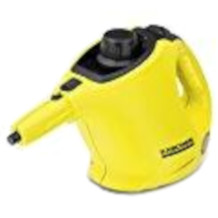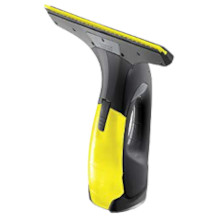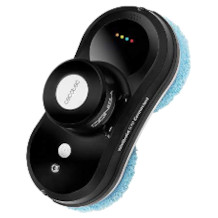Pressure washer purchasing advice: how to choose the right product
- What You Need to Know
- With a high-pressure cleaner, you can remove dirt faster and more effectively than with conventional cleaning methods.
- The most important key figures for high-pressure cleaners are water pressure, flow rate and motor power.
- A distinction is made between high-pressure spray cleaners and electric high-pressure cleaners. For private use, mainly electric models come into question.
- High-pressure cleaners do not require chemical cleaning agents.
- Since working with water under high pressure involves certain dangers, you should follow the safety guidelines for your own protection.
Sparkling clean with the power of water
A high-pressure cleaner produces a powerful water jet that can be used to clean surfaces of stubborn dirt without much effort. The principle of cleaning with a water jet is already known from the garden hose. However, while a normal water hose has a moderate pressure of about four bar, a high-pressure cleaner has a pressure of more than one hundred bar. This means that it cleans many times more effectively.
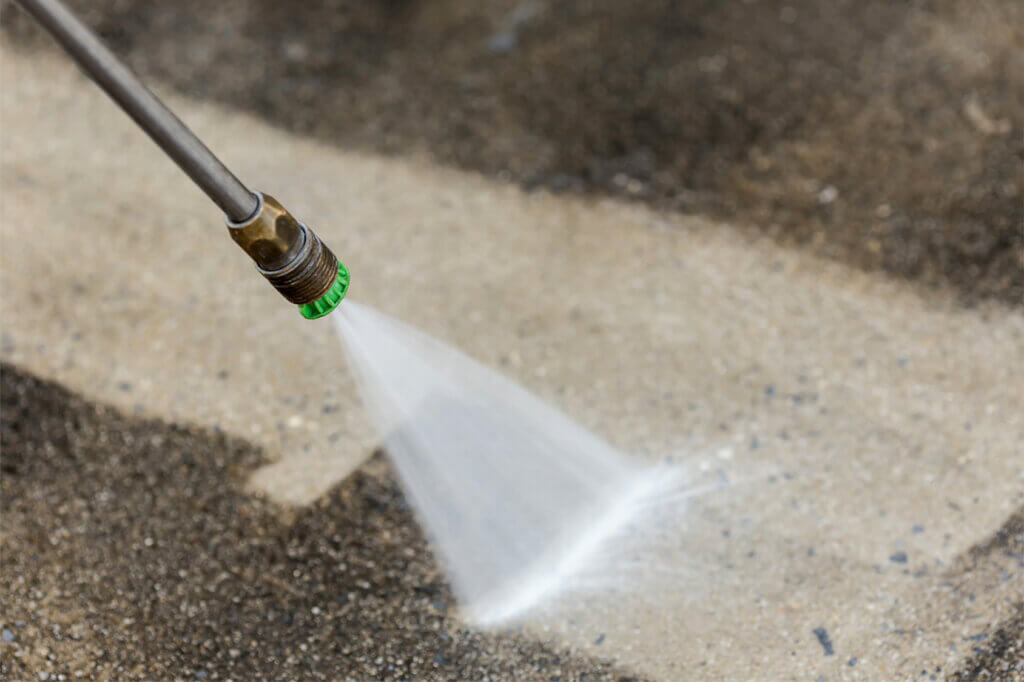
A terrace floor overgrown with moss and lichen, for example, will be sparkling clean again in no time with a high-pressure cleaner. You can also get rid of coarse dirt on vehicles with a high-pressure cleaner in no time at all. Even oily and greasy residues on the car body are no problem for these devices. Dirt that can only be removed with a brush by long, laborious scrubbing is washed away in no time by the powerful jet of the high-pressure cleaner. With a high-pressure cleaner, you can clean even large areas quickly and without much effort. An additional advantage of high-pressure cleaners is that they do not require any chemical cleaning agents. This makes them comparatively environmentally friendly.
Danger notice
Do not underestimate the power of the water jet. Never point it at people or animals, as contact can cause serious injury. Also, do not clean sensitive surfaces or plants with a pressure washer.
A high-pressure cleaner is well suited for the following areas of application, among others:
- Patio floors
- Driveways
- Stone slabs
- Facades
- gutters
- Garden fences
- Barbecues
- Garden tools
- Garden furniture
- Cars
- Bicycles
- Motorbikes
- Boats
Types of high-pressure cleaners
High-pressure cleaners shoot a powerful jet of water through a nozzle at a target object. The nozzle is not mounted directly on the hose outlet, but sits at the end of a sturdy tube called a lance. This design allows the user to maintain an appropriate safety distance from the high-pressure jet.
Basically, a distinction is made between diesel- or petrol-powered spray high-pressure cleaners and high-pressure cleaners with an electric motor. In addition, models are available that heat the water to sometimes more than 100 degrees Celsius and thus clean particularly thoroughly.
The drive: electricity or petrol
High-pressure cleaners generate water pressure with a motor-driven pump. In the home, mainly models with electric motors are used. Petrol and also the rather uncommon diesel-powered high-pressure cleaners are much more powerful and robust than electric high-pressure cleaners, but they are also much louder in operation. Since they are also both larger and heavier and cost considerably more money than inexpensive electric models, they are mainly used in professional environments. Their performance spectrum also clearly exceeds the requirements profile of a private household.
One advantage of fuel-powered high-pressure cleaners is that they are independent of the power grid. Electric high-pressure cleaners, on the other hand, require a power connection. In practice, this often means that you have to fiddle around with a cable drum, for example, to clean the car in the car park or corners of your garden further away from the house. Since the pressure washer also needs a water connection, it is always hanging on two “cords”, which makes handling difficult. This is where battery-powered high-pressure cleaners come into play.
Batteries as an alternative to the cord
Pro Points
- Can be used without a power connection
- Can sometimes be used without a water connection
Drawbacks
- Limited running time
- Low water pressure
- Weak motor
Electric high-pressure cleaners with rechargeable batteries can also be used where there is no mains connection available, for example in allotments or on campsites. However, they only have a limited runtime. You can work with it for about 20 minutes, then the battery is empty and must be recharged. For power-saving reasons, the rechargeable models are usually less powerful: The water pressure is typically a maximum of 100 bar.
Battery-powered high-pressure cleaners with a built-in water tank are particularly mobile. They require neither a power supply nor a water connection. They are very convenient for cleaning smaller areas. However, they are poorly suited for larger areas because you have to fill the tank repeatedly and replace the battery frequently if you use them for a longer period of time.
Hot water for extra-deep cleaning
Pro Points
- Dissolves dirt better than cold water
- Kills germs
Drawbacks
- Significantly higher initial costs
- Higher operating costs
- Risk of burns
The industry uses hot water high-pressure cleaners that operate at temperatures of up to 155 degrees Celsius. Due to the increased temperature, these devices have an even better cleaning effect. In addition, the hot water or steam kills many pathogens. However, such devices are not common for home use. They offer more cleaning power than is needed in the household and garden. Not only are their purchase costs higher than those of cold-water high-pressure cleaners, heating the water also consumes a lot of energy, which results in high electricity consumption and thus high operating costs.
High-pressure cleaners: Making a purchase decision
When buying a high-pressure cleaner, it makes sense to pay attention to the intended use and choose a device that meets the requirements. If you buy a high-performance cleaner for light tasks, you will spend a lot of money unnecessarily. However, if you buy a high-pressure cleaner that is not up to the job out of thriftiness, you are not doing yourself any favours either.
Size of the area to be cleaned
For smaller areas, such as the car, the bicycle or the balcony, an inexpensive high-pressure cleaner with relatively low power is quite sufficient. Battery-operated devices can also be considered for this purpose. On the other hand, if you regularly clean large areas of more than 20 square metres, you should think about the performance of the pressure washer. If the device is too weak, cleaning will simply take too long. In this case, a corded electric pressure washer with sufficient pressure and a high-wattage motor is the best choice. For even larger areas, such as entire house facades, a petrol pressure washer can also be considered.
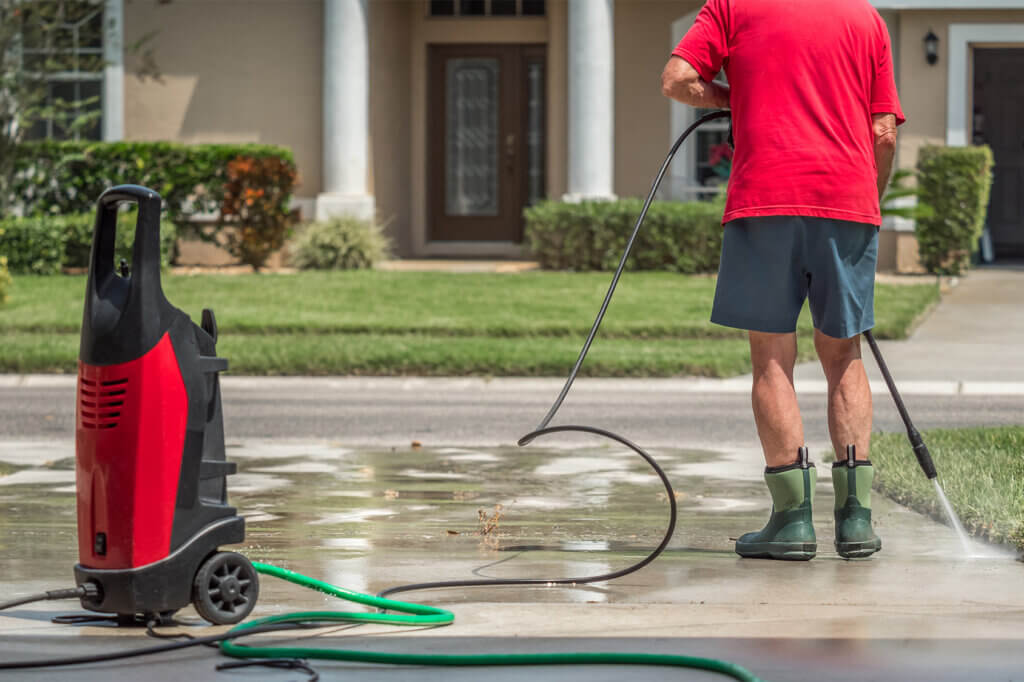
How much bar does the high-pressure cleaner need?
The more water pressure a high-pressure cleaner has, the more stubborn dirt it removes and the faster the work progresses. A normal water pipe has a pressure of about 4 bar – even inexpensive high-pressure cleaners work with a much higher pressure of 100 to 140 bar. However, cordless high-pressure cleaners in particular are offered with a much lower maximum pressure, sometimes even with only 20 bar. These devices are also referred to as medium-pressure cleaners. Their advantage is that they need less electricity and therefore last longer in battery mode. In addition, they work more gently because of the reduced pressure. There is little risk of damaging sensitive surfaces. Particularly powerful high-pressure cleaners can reach up to 200 bar.
What flow rate should the high-pressure cleaner have?
The flow rate or water flow is also important for the cleaning performance of a pressure washer. It is measured in litres per hour. The higher the flow rate, the higher the efficiency of the pressure washer. High pressure with too low a flow rate means that surfaces are not cleaned well. A flow rate between 500 and 1,200 litres per hour is recommended.
Mobile high-pressure cleaners usually have a much lower water flow rate. It is more in the range of 100 to 300 litres per hour. There are practical reasons for this: With these devices, the water comes from a tank or bucket. It must not be too large, otherwise it could no longer be transported when full. A high flow rate would make it necessary to fill the tank very frequently.
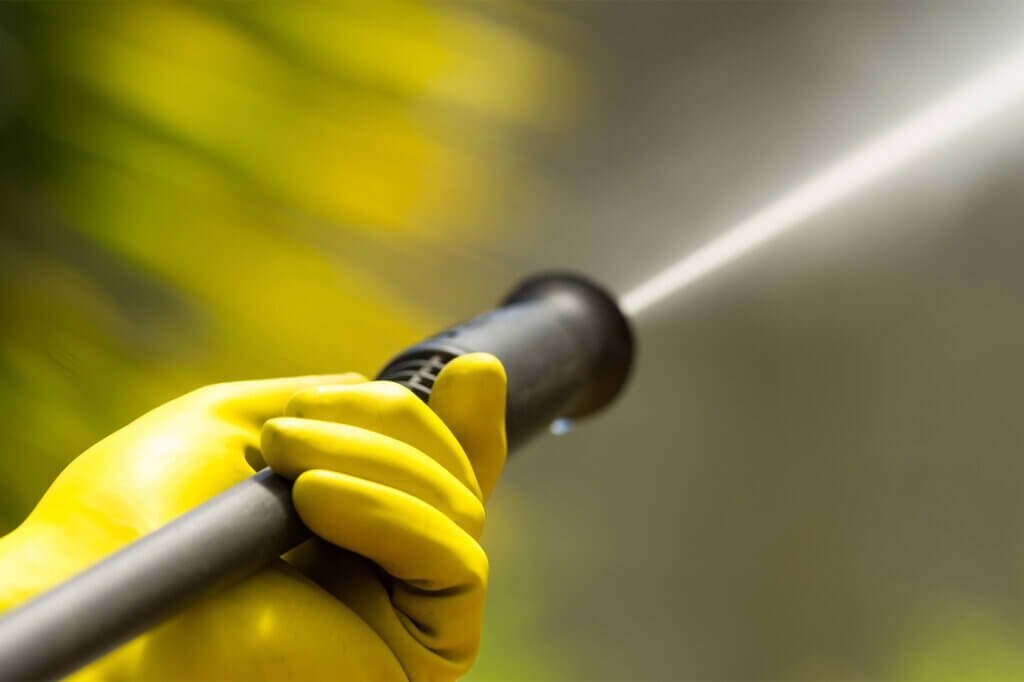
Maximum water temperature of the pressure washer
Ordinary cold-water high-pressure cleaners do not heat the water. However, they can be connected to the hot water supply for a better cleaning effect. Hot water usually has a temperature of 60 to 70 degrees Celsius, which most cold-water pressure washers can easily handle. However, if the water is too hot, you can permanently damage your pressure washer – check the instruction manual to find out what the maximum water temperature of your device is.
You should only use a hot water pressure washer that heats the water itself and reaches temperatures of 100 degrees and more if you have special reasons for doing so. Such a device is not necessary for the usual purposes. If you want to remove a lot of particularly stubborn dirt quickly or if the germicidal effect plays a role, a hot-water high-pressure cleaner can be a sensible purchase.
High-pressure cleaners and electricity
With electric high-pressure cleaners, the question of power supply plays a role. Usually, corded high-pressure cleaners are a good choice. These models are powerful and inexpensive. If you do need to operate your pressure washer outside the range of a power socket, you can always make do with an extension cable or a cable reel.
Rechargeable high-pressure cleaners are niche solutions for special purposes. They are ideal when mobility is more important than high cleaning performance. They are practical, for example, for residents of rented flats who want to use them to clean their bicycle or balcony from time to time. They can also do a good job at the campsite. It makes sense to equip a battery-powered high-pressure cleaner with a tank or a suction device for supplying water from a bucket, because where there is no power socket within reach, there is often no water supply either.
Detergent supply
Most of the time, you can get by without detergent when using pressure washers. However, for certain applications, the addition of cleaning agents is useful. When washing a car with a pressure washer, for example, many users do not want to do without additives for more shine and cleanliness. For these cases, the high-pressure cleaner should either be equipped with an integrated detergent tank or with a connection point for an external detergent tank.
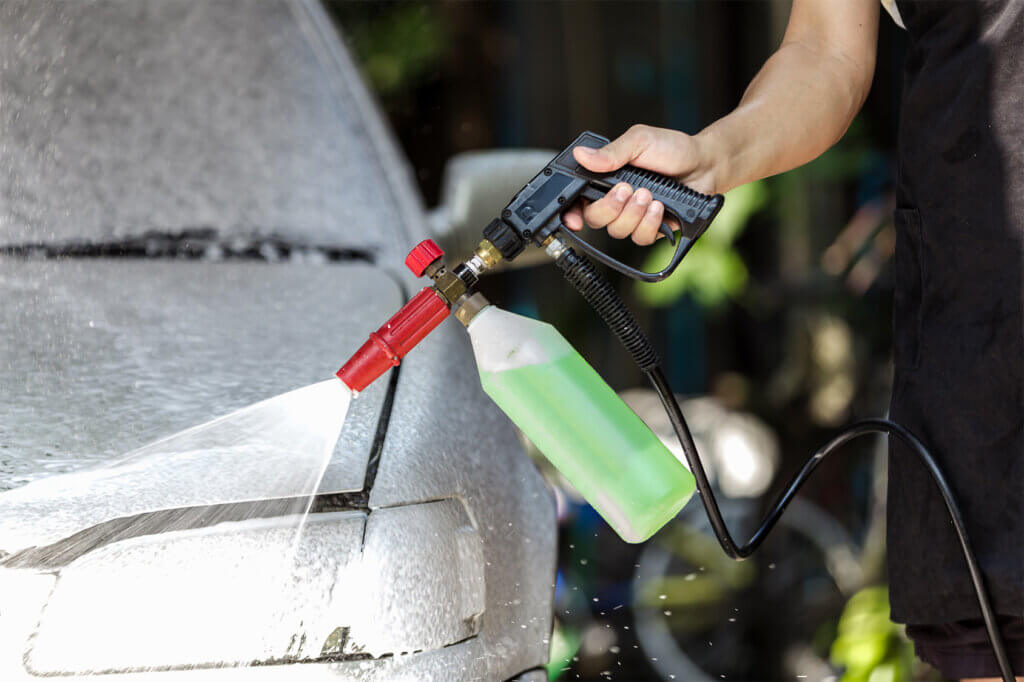
Weight and size
Most high-pressure cleaners are not small and light. This is due to the fact that a robust construction is needed to withstand the high pressure. The motor also always weighs a certain amount. More compact devices are about the same weight and dimensions as a standard hoover, but a weight of 15 kilograms and more is also common. Such heavy appliances are usually equipped with castors. This makes them easy to move on flat surfaces – so a relatively large high-pressure cleaner is also practical for predominantly stationary use. However, if you plan to transport your pressure washer frequently by car over longer distances, it is advisable to pay special attention to compact dimensions and low weight.
Scope of delivery
Make sure that everything you need to operate the unit is included. This includes a high-pressure hose, a spray lance and at least one attachment. In addition to the standard attachment, it makes sense to include a flat-jet nozzle for floor cleaning and a rotating nozzle for particularly stubborn dirt. With a battery-powered device, you should make sure that at least one suitable battery is included in the scope of delivery.
Repair and availability of spare parts
Inexpensive electrical appliances from unknown brands in particular are designed as disposable products. Even professionals cannot repair them because the manufacturer does not sell spare parts. This is usually different with brand-name products, as it is important for the companies to be perceived as producers of high-quality and durable goods. Kärcher, for example, even offers a repair service itself. This is free of charge within the warranty period. After that, the company repairs its products at a pre-determined fixed price, so the customer is not surprised with unexpectedly high repair costs.
Accessories for high pressure cleaners
High-pressure cleaners are usually sold ready for use. A high-pressure hose, a spray lance and usually even several nozzles are usually included. So you can get started as soon as you unpack your new pressure washer. For certain tasks, however, it makes sense to purchase accessories. With special nozzles and hoses, a high-pressure cleaner is also suitable for cleaning blocked drain pipes or gutters, for example.
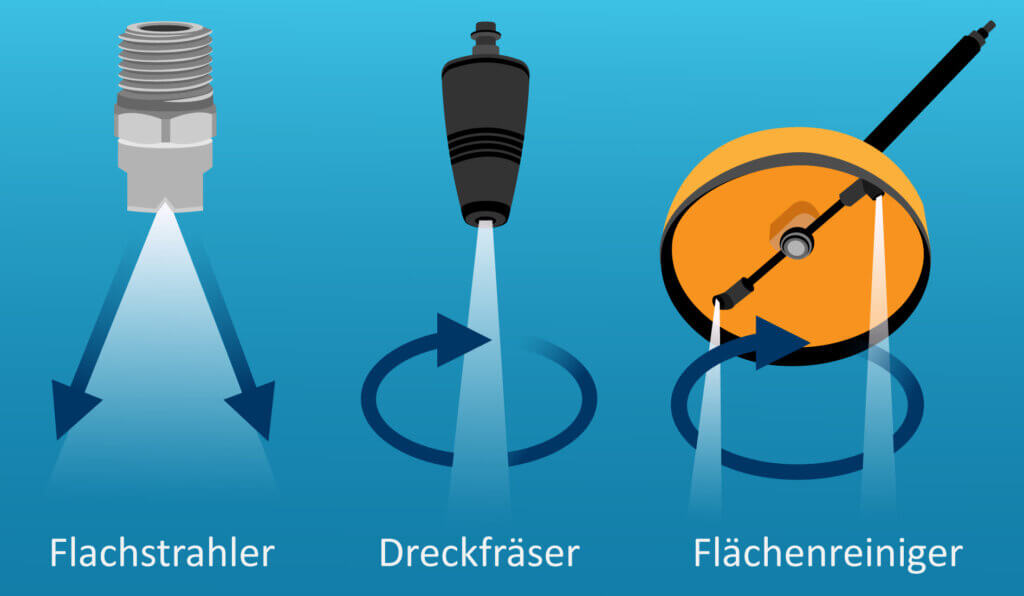
Flat jet nozzle
The flat jet nozzle is a reliable workhorse. It sprays the water in a wide fan onto the object and enables speedy cleaning. It is a good choice for standard applications: Everything from car tyres to fence slats can be cleaned quickly. A flat-jet nozzle should be included in the scope of delivery of every high-pressure cleaner.
Dirt cutter
For particularly stubborn dirt, it is worth using a dirt cutter. This can be the layer of engine oil and filings on a workshop floor that has been neglected for years or a stone wall that is thickly overgrown with lichen and moss. This type of high-pressure cleaner attachment does not jet in a fan shape, but produces a concentrated jet of water. The entire power of the high-pressure cleaner is therefore concentrated on a very small area. In addition, the jet of the dirt cutter rotates. This creates a chisel effect that even thick, strongly adhering dirt cannot withstand.
Surface cleaner
Surface cleaners were developed for cleaning large horizontal surfaces. Just like flat blasters, they have a wide jet so you can get on with the job quickly. However, unlike flat blasters, the nozzle of surface cleaners is surrounded by a protective housing that prevents water from spraying to the side and upwards. Surrounding objects are thus not contaminated with dirty water.
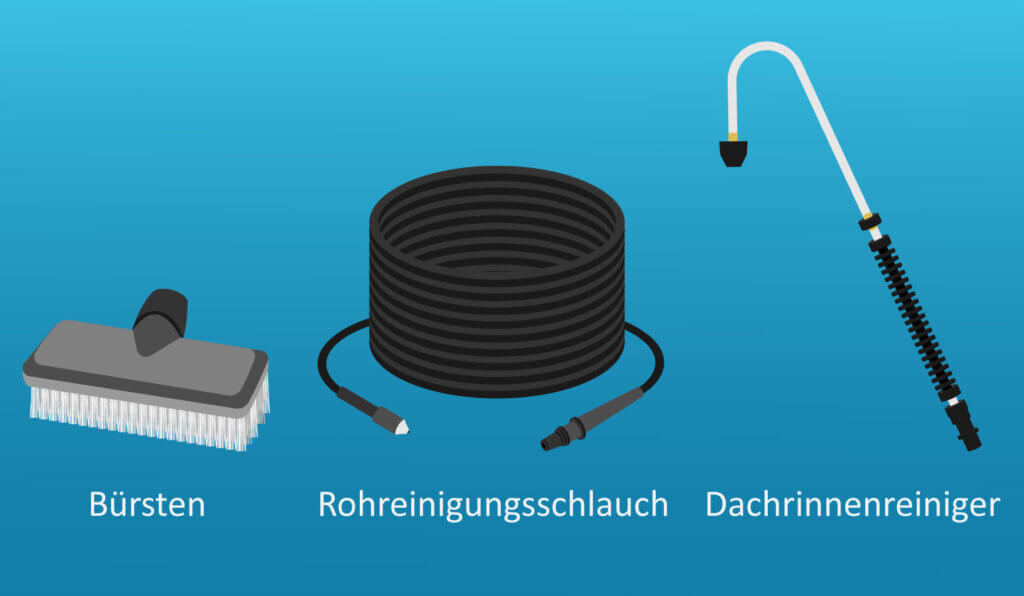
Brush
At first glance, a brush attachment seems to run counter to the principle of a high-pressure cleaner. After all, the point of these devices is to clean gently with water only and not to damage sensitive surfaces with a scratchy brush. However, the powerful water jet of a high-pressure cleaner is also well suited for rotating a brush. The water simultaneously rinses away the dirt that has been brushed out. Brush attachments for washing cars, for example, work according to this principle. In addition to these rotating brushes, nozzles with fixed brushes are also available. The user does not have to fear scratches in the paintwork when using brush attachments, because the bristles are made of particularly soft material.
Pipe cleaning hose
Blocked drain pipes are a nuisance. Anyone who has ever tried to clean one with the good old plunger or with a drain spiral can tell you a thing or two about it. These tools require a lot of patience and muscle power; often they do not succeed in cleaning the pipes. In the end, you have to hire a plumber for a lot of money. Much more effective than the manual tools – but still cheaper than a tradesman’s job – is a special pipe cleaning hose for the high-pressure cleaner. These hoses have an attachment that propels the hose into the pipe with rear-facing nozzles, while at the same time a forward-facing jet flushes the path clear.
Gutter cleaning kit
The trade offers special lances that make gutter cleaning particularly easy. The tip of such a lance is usually bent at about 45 degrees so that the user can use the high-pressure cleaner without standing over the gutter. Gutter cleaning is even more comfortable with a telescopic lance. Models with a length of up to 5.5 metres are available. With such a lance, you can clean the gutter of a detached house from the ground. Since you do not have to climb a ladder to work with it, telescopic roof cleaning lances for the high-pressure cleaner reduce the risk of accidents.
Hose extension
A longer hose increases your radius of action when working with the high-pressure cleaner. The high-pressure hoses supplied as standard are usually between three and five metres long. However, significantly longer high-pressure hoses are also technically possible. The online trade offers hoses with a length of up to 30 metres.
Instructions for use and safety
High-pressure cleaners are uncomplicated devices that can be easily used by everyone. However, you should follow a few tips to avoid injuries and damage to property.
What the high pressure cleaner is and is not suitable for
High-pressure cleaners can be used in many ways. You can use them to clean the majority of all outdoor objects. Floor tiles, facades and garden tools are typical areas of application. However, don’t get the idea of “cleaning” your dog, cat or even your child. This does not lead to cleanliness, but to serious injuries. Plants also do not tolerate being sprayed with the Kärcher. You should also be careful with surfaces with sensitive coatings and generally with soft objects (such as rubber seals and car tyres). To avoid damaging them, it is advisable to work with reduced pressure or from a greater distance.
Electrical appliances of all kinds are usually damaged when cleaned with the pressure washer. This even applies to appliances that are waterproof under everyday conditions, because many seals cannot withstand the high-pressure jet.
Washing a car with a high-pressure cleaner
Many car owners use the high-pressure washer to wash their cars. However, if used improperly, it can damage the car. If the paint is treated with too much water pressure, invisible micro-cracks can develop, causing it to peel off over time. Window seals, tyres and other soft rubber parts can also be damaged. Therefore, be sure to keep the minimum distance recommended in the operating instructions when washing the car. If your pressure washer allows you to regulate the pressure, it is advisable to work only at half strength. You can also clean your car gently with a wide-radiating nozzle and a flat working angle.
Not only does too strong a water jet pose a danger to the paintwork, but also grains of sand and small pebbles in the dirt crust pose a danger in the case of heavy soiling. If they are washed away with force, this sometimes leads to unsightly scratches. If you want to be on the safe side, you should rinse off the dirt with a garden hose or low-pressure cleaner before using the high-pressure cleaner.
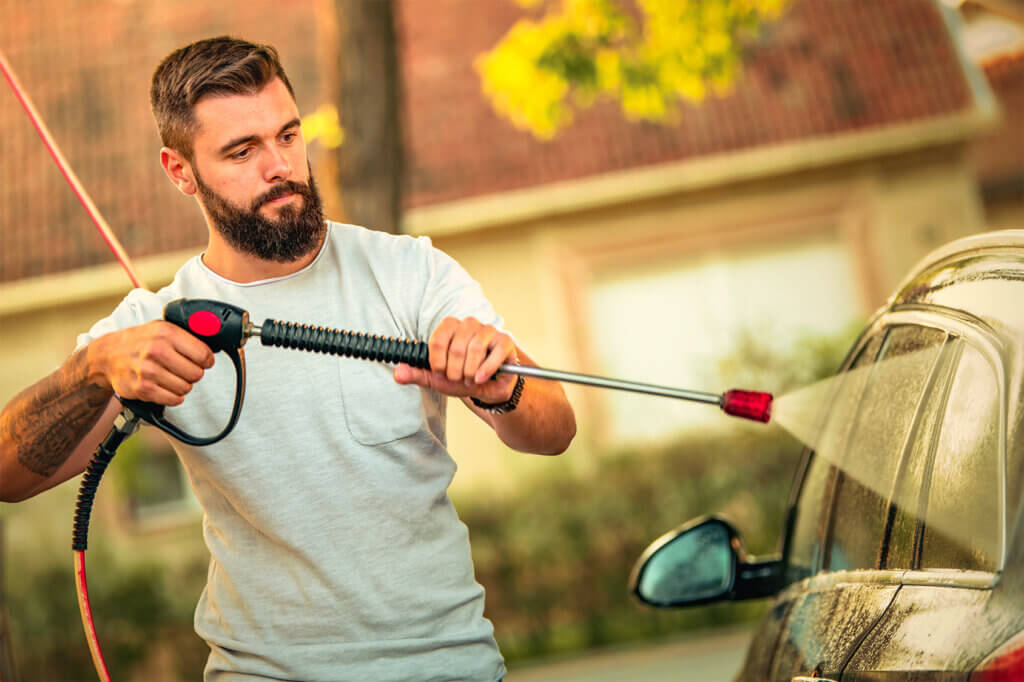
Can I clean my bike with a pressure washer?
Whether a high-pressure cleaner is the right tool for cleaning a bicycle is a controversial issue among cyclists. Of course, it cleans the bike much faster and more thoroughly than a rag and bucket. On the other hand, bicycles are much more delicate than cars. Since, unlike motorised four-wheelers, they are not covered, the water jet hits the mechanics directly. However, if you leave out the chain, the bearings, the valves and any stickers, cleaning with the high-pressure cleaner will hardly lead to increased wear on the bicycle. Just as with a car, you should work with reduced pressure, sufficient distance and at a flat angle.
Is cleaning agent necessary for a high-pressure cleaner?
In general, the object being worked on will get clean without any cleaning agent. The fact that they do not use any environmentally harmful chemicals is an important advantage of high-pressure cleaners. However, many models have a container for cleaning agents. A number of special cleaning agents are available in the shops: wood cleaners for cleaning and maintaining wooden surfaces, stone cleaners for removing moss and algae from facades and stone floors, and plastic cleaners that efficiently clean garden furniture, for example. But remember: the residues of these cleaning agents end up in the environment, usually even in your garden. Many users manage without them and thus save money. One exception, however, is car washing: to bring their cars to a high shine, consumers often turn to special car cleaners for the high-pressure cleaner.
Dangers of working with a high-pressure cleaner
On the manufacturers’ advertising pictures, working with a high-pressure cleaner looks very pleasurable. It is a pleasure to help a dirt-stained surface piece by piece to cleanliness and a new shine. But the work is only easy and safe if you know the risks and take appropriate precautions. The following hazards exist when working with a high-pressure cleaner:
- Contact with the water jet
- Loose or broken parts flying off
- Burst pipes
- Asbestos, lead, silicogenic dusts and other poisons in the treated object
- Hazardous substances in the spray mist
- Contact of the water jet with live parts
- Accidents caused by the recoil of the high-pressure cleaner
- Hearing damage from the noise of the engine
The right protective equipment for high-pressure cleaners
The largest statutory accident insurance institution in Germany, the Verwaltungs-Berufsgenossenschaft (VBG), prescribes the following personal protective equipment for occupational work with high-pressure cleaning equipment:
- Spray protective trousers and jackets
- Safety boots
- Gloves
- Face protection
- Breathing protection
- Hearing protection
There are no exceptions to the VBG: even when working briefly with the equipment, the full protective equipment must be worn. In the private sphere, however, everyone is responsible for their own safety. It might be an exaggeration to put on full protective gear for every small operation with a pressure washer. But at the very least, sturdy shoes and clothing that fully covers the arms and legs, as well as protective goggles, are appropriate. Depending on the volume of your pressure washer, you should also not do without hearing protection.
What do I need to keep in mind for safety when “scouring”?
In addition to the right protective equipment, careful handling of the high-pressure cleaner is necessary to avoid injuries and accidents. Of course, you should never point the high-pressure cleaner at people or animals. In addition, a safe distance from live parts is necessary to avoid electrical accidents. Before each use of the high-pressure cleaner, you should make sure that there are no holes or breaks in the high-pressure hose. The uncontrolled water jet coming out of small leaks can cause serious injuries. Also, do not underestimate the recoil of the pressure washer. A secure footing is absolutely necessary when using it. This is especially true when working on ladders or other elevated positions. With a telescopic lance and a gutter nozzle, you can also carry out most work from the ground.
Extreme caution with asbestos
Under no circumstances should you use the pressure washer on surfaces containing asbestos. Asbestos was popularly used in construction until the 1980s because of its fire-retardant properties. The grey corrugated cardboard used to cover roofs is well known. But the carcinogenic material was also frequently used in the past for flower pots, shingles, floor coverings and even plaster. The asbestos used at that time is now considered one of the most dangerous pollutants in building materials and can still be found in many houses built or renovated at that time.
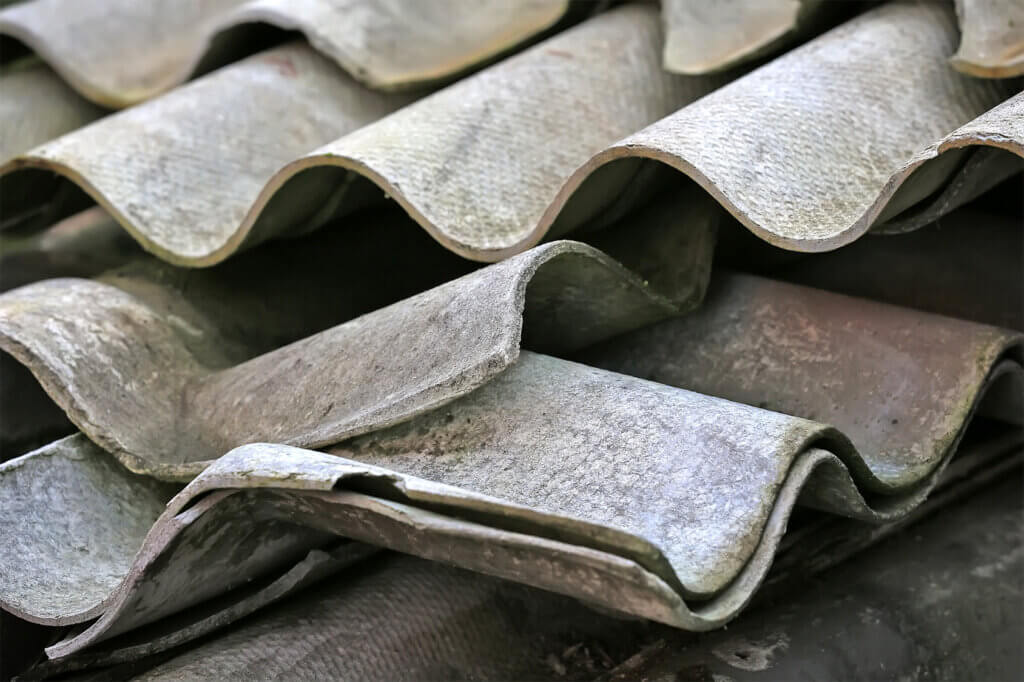
As long as they are not damaged, however, most asbestos materials are largely harmless. The asbestos fibres are bound in them and pose no danger. Only when broken or worked do the microscopic fibres become airborne, enter the lungs and can cause cancer there even in small quantities. Cleaning with a high-pressure cleaner also has a slightly abrasive effect. The material removal is minimal, but since there are no safe limits for asbestos, you should not take any risks.
Well-known manufacturers of high-pressure cleaners
When it comes to high-pressure cleaners, most people think of Kärcher first. The company introduced high-pressure cleaners for private use in the 1980s. Before that, the devices were almost exclusively used in the professional sector. Even today, the word “kärcher” is used in colloquial language as a synonym for “cleaning with a high-pressure cleaner”. But other brands have also established themselves in this field and do not have to hide from the market leader.
Kärcher
Kärcher is the undisputed king of high-pressure cleaners. The brand, whose high-pressure cleaners are all bright yellow, is characterised by a wide range of products. From inexpensive high-pressure cleaners for occasional users to high-performance cleaning machines for well over a thousand euros, everything is included. The range of accessories is also impressive: With various nozzles, lances, spray protection shells, brushes, hoses and spray guns, Kärcher offers the right tool for every conceivable application of a high-pressure cleaner.
Nilfisk
Nilfisk is a Danish manufacturer of cleaning equipment. The company looks back on a long history. It was founded in 1906 by Hans Marius Nielsen and Peder Andersen Fisker. The company name is derived from the surnames of the two founders. In the post-war years, Nilfisk became popular as a manufacturer of hoovers and introduced an innovative new device to the market with the scrubber-dryer. High-pressure cleaners are among Nilfisk’s most important products. The company’s focus is on cleaning machines for professional use, and its products in the consumer segment are also characterised by high-quality workmanship and a serious appearance.
Bosch
The Stuttgart-based company Bosch has written German industrial history and is today one of the largest manufacturing companies in the country. The most important pillar of Bosch is automotive technology. However, most consumers associate Bosch with two other product categories, namely power tools and electric kitchen appliances. A Bosch drill, jigsaw or kitchen mixer can be found in almost every German household.
Bosch high-pressure cleaners are also very popular with consumers. As with the rest of the manufacturer’s power tools, two lines are available: tools in green for do-it-yourselfers and products in blue for industry and trade. Of course, end users who appreciate high-quality tools also like to reach for the classy blue devices.
Makita
The Japanese tool manufacturer Makita has been selling its products in Germany since the late 1970s. If you think of cheap products from the Far East, you are wrong. Makita enjoys an excellent reputation among construction professionals and the tools and machines with the distinctive red logo are also becoming increasingly popular among home users. However, the high-pressure cleaner range is manageable with only six different devices.
Kränzle
Not cheap, but good: this is how one could describe Kränzle’s high-pressure cleaners. As a specialist for these devices, the company mainly produces high-pressure cleaners. It was founded in 1974 by Josef Leonhard Kränzle, a trained iron turner, in his garage. The company is based in the small Swabian town of Illertissen, with which the company founder is strongly connected through his involvement in local politics and as a patron of the arts.
Kränzle has two product lines for its high-pressure cleaners: Consumer and Professional. The focus is clearly on professional equipment. The high-pressure cleaners from the consumer line are also intended for more sophisticated requirements and cost somewhat more than comparable devices from other manufacturers.
Einhell
The manufacturer from Bavaria has specialised in power tools for do-it-yourselfers. On the shelves of DIY stores, the company’s products stand out because of their strong dark red colour and their good price-performance ratio. The product range is very broad: From chop and mitre saws to electric water pumps, Einhell offers almost everything that is usable and useful in the machinery of an ambitious handyman. The manufacturer’s three high-pressure cleaners are characterised by a relatively compact design and affordable prices.

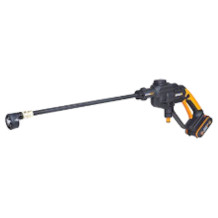
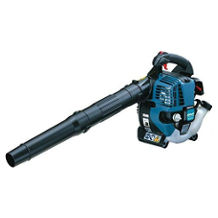
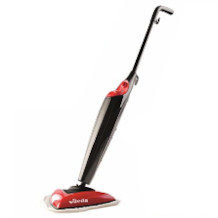
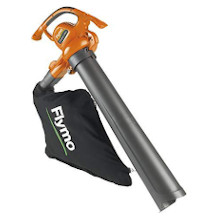
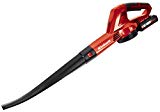
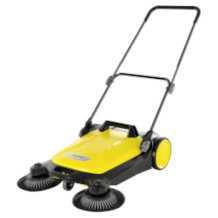
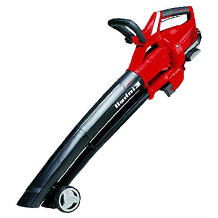
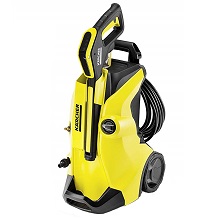
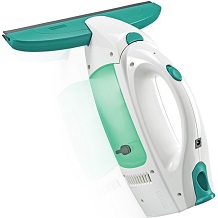

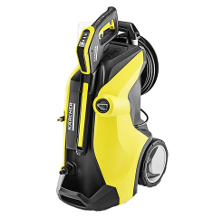
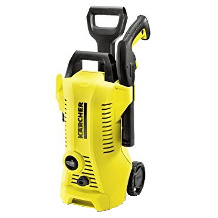

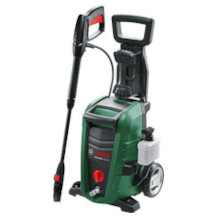
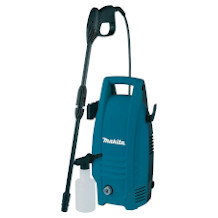
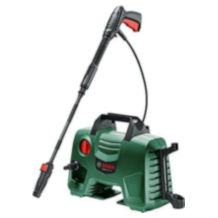
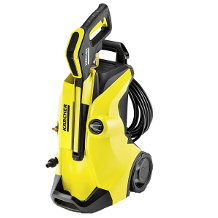

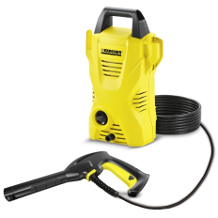

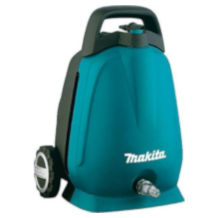
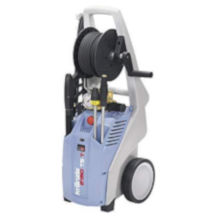
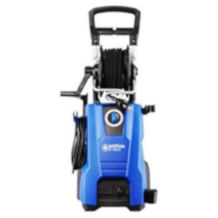
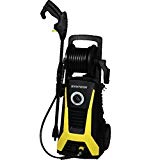
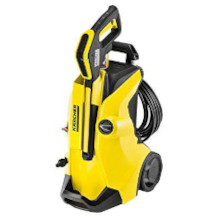
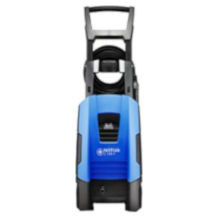
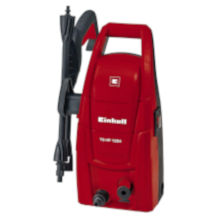


 1,248 reviews
1,248 reviews



